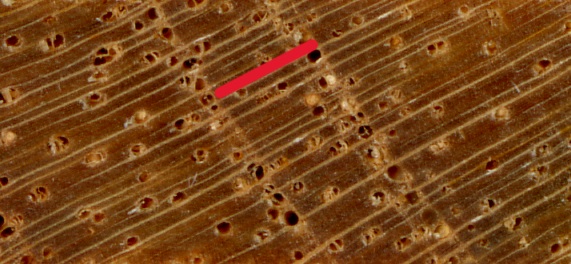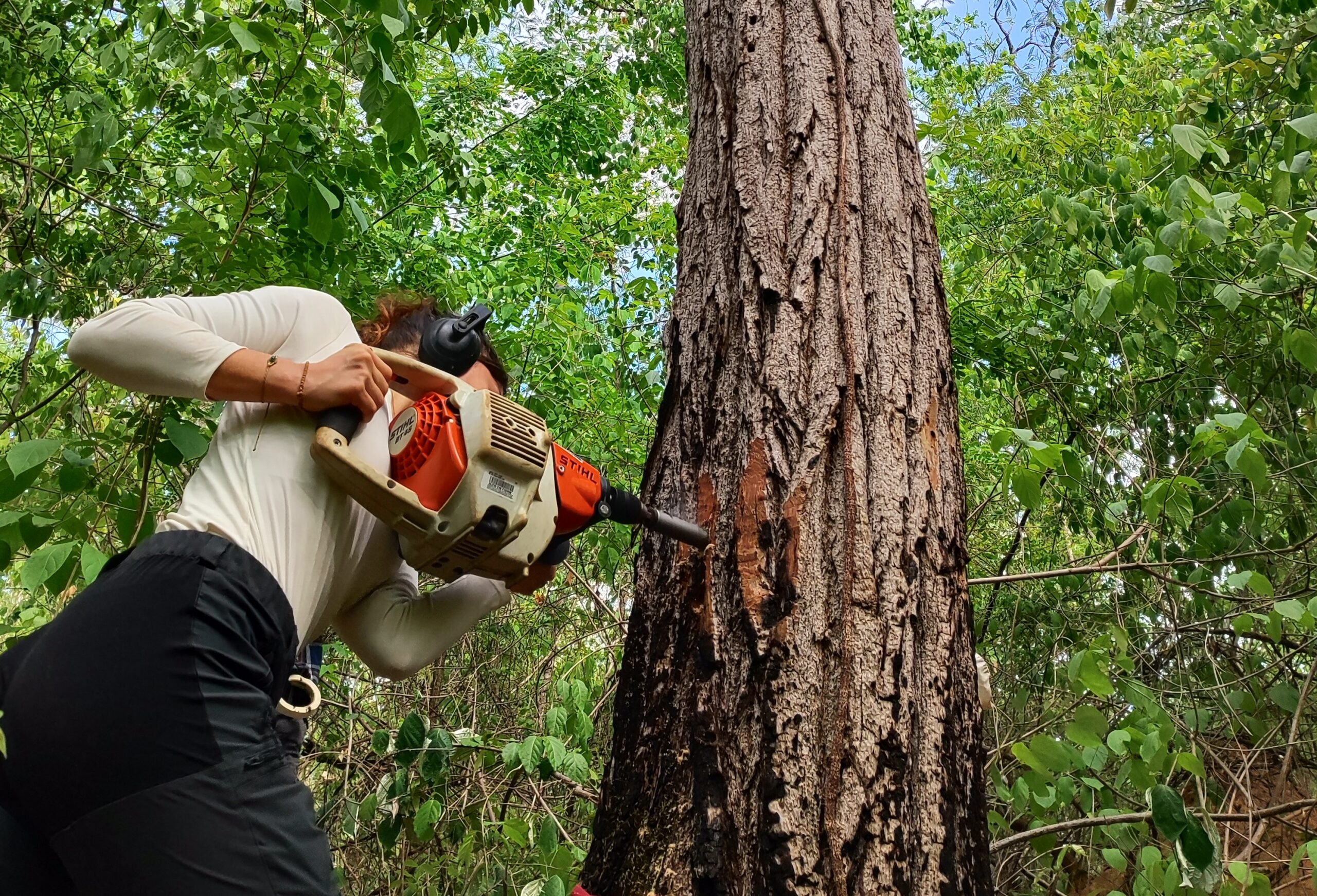Tropical trees recover rapidly from a dip in growth due to a drought. On average, dry conditions reduce growth by 2.5 per cent. But growth soon catches up after a dry year. This is shown by an extensive study reported in an article in Science, with Pieter Zuidema as the lead author.
Growth rings are the tree’s archive. Plotting that growth against climate data shows how the tree responds to changing conditions. Zuidema, a professor of Forest Ecology and Forest Management, and his 150 (!) co-authors analysed the data from 483 annual ring studies covering a total of over 10,000 tropical trees around the world.
Tropical gap
The idea for the study originated seven years ago, while Zuidema was on sabbatical at the University of Arizona’s Laboratory of Tree-Ring Research. ‘Data on tree rings is often published, but it is then stored in databases that are not accessible worldwide. What is more, there is geographically a big tropical gap in the datasets.’
He decided to do something about this. Zuidema: ‘We approached colleagues and asked them whether they would share data with us so we can perform new analyses. They said yes and that explains the large number of co-authors. The data used by the team has since been made available in a central database. That way, we are slowly filling that gap.’
We had expected a bigger effect
Pieter Zuidema, professor Forest Ecology and Forest Management
The analysis focused on how tropical trees respond to drought. The researchers examined the annual rings for the ten driest years in the past century. They distinguished between three forms of drought: not enough rain, excessively dry air and a shortage of water (precipitation minus evaporation).

The results seem comforting at first. Drought causes a decline in growth of 2.5 per cent on average. That effect is surprisingly small, says Zuidema. ‘We had expected a bigger effect based on previous studies in Europe and the US.’ And the trees usually recover a year later from the drop in growth.
Nor is that fall in growth inevitable by a long way. One third of the trees showed no decline in growth — or even grew faster. That latter finding seems strange but can be explained. Zuidema: ‘In wetter areas, dry years are also years with less cloud cover. That increases photosynthesis and therefore growth as well.’
In a quarter of the areas we studied, the drop in growth was over 10 per cent
Pieter Zuidema, professor Forest Ecology and Forest Management
According to Zuidema, the fact that tropical trees are relatively unaffected by drought is probably because they can draw on their reserves. Trees contain a lot of unbound sugars. But those reserves are not unlimited, warns Zuidema. What is more, the decline in growth due to drought can be considerable in a particular locality.
‘So the message is nuanced’, says Zuidema. ‘In general, trees in the tropics can recover well from a period of drought, but the effects are much greater in some places. In a quarter of the areas we studied, the drop in growth was over 10 per cent and the dry conditions eventually led to more trees dying.’
Loss of carbon
Zuidema and his team arrived at a cautious estimate that a dry year causes tree deaths of 0.1 per cent. ‘That doesn’t seem much but it means a loss of a lot of carbon worldwide. And it takes a long time before that can be compensated by new trees.’ In addition, the effects are greater in regions that are already drier.
Droughts will become more common in future due to climate change. Zuidema: ‘Up to now, the forests have been able to cope with the droughts reasonably well, but we are concerned about the future.’

 Growth rings are the tree’s archive. A sample being taken from a cedar in Brazil. Photo Peter Groenendijk
Growth rings are the tree’s archive. A sample being taken from a cedar in Brazil. Photo Peter Groenendijk 

